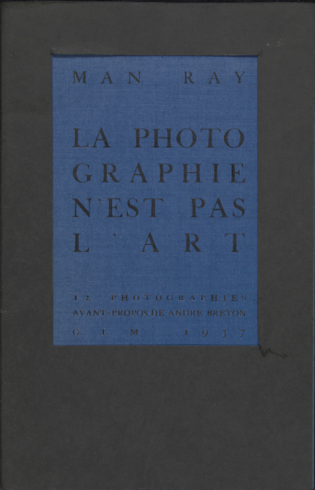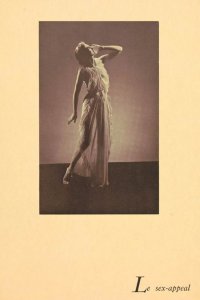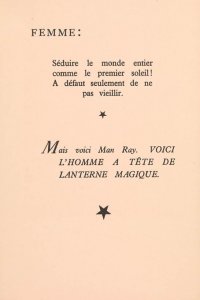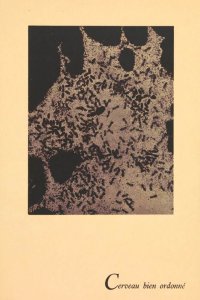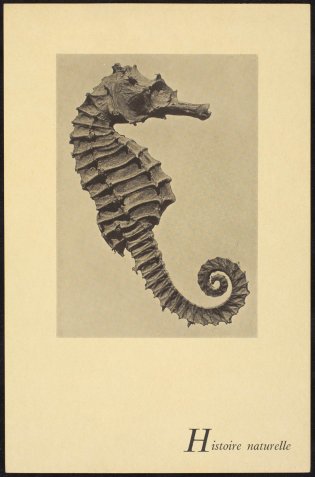La photographie n'est pas l'art
Year: 1937
Artist: Man Ray (1890 - 1976)
Author: Man Ray (1890 - 1976)
Publisher: G.L.M.
In addition, the word 'Lanterne' (lantern) implies a source of light. This is an element with which Ray has played a lot in the creation of his photographic oeuvre.His invention, the 'rayogramme', a copy of which can also be found in L’ange Heurtebise (1925), is a good example of this. This technique consists of placing an object on light-sensitive paper and then immediately exposing it to light. No camera is used for this. La photographie n'est pas l'art also contains a rayogram, accompanied by the caption 'Photographie intégrale et cent pour cent automatique' (Integral and one hundred percent automatic photography).
You can also link the word 'Magique' (magic) to Man Ray and the surrealistic ideas that can sometimes be found in La photographie n'est pas l'art. The word actually implies two things. It can first of all refer to the supernatural, a dream reality, and thus to surrealism. The magical can also indicate the creative mind of the artist who has certain imaginations with which he 'enchants' the psyche of the viewer and activates the viewer's fantasy.
